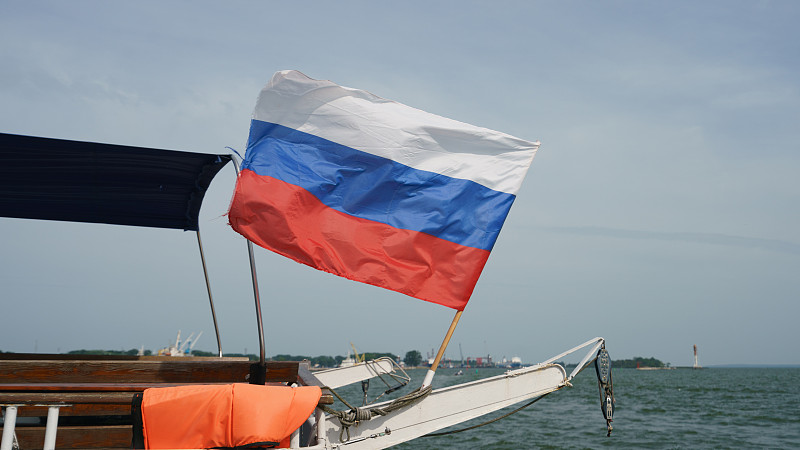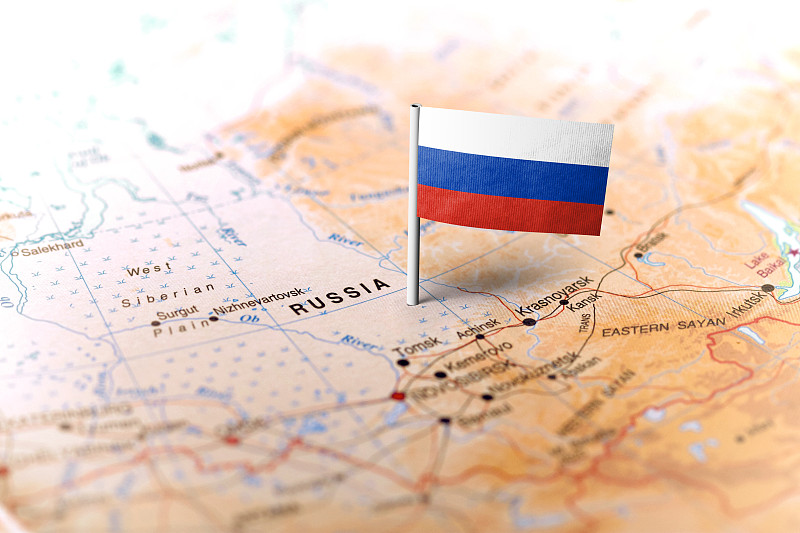Freight Services between China and Russia have played a crucial role in promoting bilateral trade cooperation and economic development. As a global manufacturing powerhouse, China exports a significant amount of goods and products to Russia, which imports to meet domestic market demands. Freight services from China to Russia are more than just logistics transportation; they serve as an important link connecting the two countries economies. This article explores the diversity of China-Russia freight services, including railway transportation, trucking, and maritime shipping, providing insights and guidance for international trade.
Our Freight Services from China to Russia
Freight services from China to Russia offer a variety of options to meet the transportation needs of different types of goods. These services include railway transportation, trucking, and maritime shipping. Moreover, the availability of multiple freight services provides ample choices for logistics transportation between China and Russia, ensuring the efficient and secure delivery of goods and fostering trade cooperation and economic development between the two countries.
Railway Transportation from China to Russia
Railway transportation serves as a vital logistics channel connecting China and Russia. After years of development and improvement, a cross-border railway transportation network has been established between the two countries. This network utilizes international railway routes to transport goods from China's starting points to Russia's destinations. Railway transportation offers lower costs and relatively shorter transit times, particularly suitable for bulk goods and transnational land transportation.
Railway transportation boasts several advantages. Firstly, railway routes are stable and fixed, unaffected by weather conditions and natural disasters, making them more reliable than other transportation modes. Secondly, railway transportation has a significant carrying capacity, making it suitable for bulk goods and transnational land transportation. Railway transportation is also cost-effective, particularly compared to air freight, offering more economical transportation options.
Railway Routes from China to Russia
Several major railway routes connect China and Russia for logistics transportation:
1. Sino-Russian International Railway (China Northeast Railway and Russia Far East Railway): This railway route connects China's Northeast region with Russia's Far East region. Starting from the coastal port city of Dalian in China, it passes through Harbin and Manzhouli, enters Russia's Primorsky Krai, Vladivostok, and finally reaches Moscow and other cities in Western Russia. This railway route is one of the most commonly used freight corridors between China and Russia, serving as an important choice for transporting bulk goods and facilitating transnational land transportation.
2. China-Kazakhstan-Russia International Railway: This railway route connects trade and transportation between China, Kazakhstan, and Russia. Starting from the Alashankou border port in China's Xinjiang Uygur Autonomous Region, it passes through cities in Kazakhstan such as Almaty and Astana, finally entering Russia's Ural and Siberian regions. This railway route provides a vital link for trade between Central Asia and Europe and offers convenient logistics transportation options between China and Russia.
3. China-Mongolia-Russia International Railway: This railway route connects China, Mongolia, and Russia. Starting from the Erenhot border port in China's Inner Mongolia Autonomous Region, it passes through cities in Mongolia such as Ulaanbaatar. Finally, it enters Russia's Irkutsk and other cities in Siberia. This railway route provides an important transportation corridor for trade and logistics between China, Mongolia, and Russia.
The development and improvement of these railway routes provide a reliable foundation for railway transportation from China to Russia. They promote trade cooperation and economic development between the two countries while offering significant connectivity for trade between Central Asia and Europe.
Railway Transportation Prices from China to Russia
Railway transportation from China to Russia ranges from $1 to $5 per kilogram.
Transit Time for Railway Transportation from China to Russia
The transit time for railway transportation from China to Russia is approximately 10 to 16 days for your goods.
Trucking from China to Russia
Trucking plays a significant role in freight services from China to Russia. Goods can be transported by road directly from the starting points in China to destinations in Russia, bypassing intermediate transshipment and reducing transit time. Trucking offers high flexibility, allowing for quick responses and adaptability to various routes and road conditions based on your requirements.
Trucking suits various goods, including consumer goods, industrial raw materials, and agricultural products. Tracking can deliver goods directly to the destination without transshipment and reloading, reducing the risk of loss and damage. Additionally, trucking provides door-to-door services, offering a convenient and comprehensive logistics solution for your transportation needs.
Trucking Routes from China to Russia
There are several main land routes for trucking from China to Russia, connecting the logistics transportation between the two countries:
1. China-Russia Highway (China Northeast - Russia Far East): This route is a major corridor connecting China's Northeast region with Russia's Far East region. It typically starts from Chinese cities such as Harbin, Shenyang, or Dalian, enters Russia through the Manzhouli border port, and then extends westward along the road network in the Far East region, reaching cities like Vladivostok. This highway route is one of China and Russia's most commonly used trucking corridors, suitable for bulk goods and cross-border land transportation.
2. China-Kazakhstan-Russia Highway: This route connects transportation between China, Kazakhstan, and Russia. It usually starts from Chinese cities in Xinjiang Uygur Autonomous Region, such as Urumqi or Khorgos, passes through cities in Kazakhstan like Almaty and Astana, and finally enters Russia's Ural region or Siberian region. This highway route provides an important trade link between Central Asia and Europe and offers convenient trucking options between China and Russia.
The development and improvement of these highway routes provide a reliable foundation for trucking transportation from China to Russia. China and Russia have strengthened cooperation in transportation infrastructure construction and trade, improving the efficiency and convenience of highway transportation. Furthermore, bilateral cooperation in road transportation has been further enhanced through government and trade agreements, promoting trucking transportation's smooth flow and development.
Trucking Prices from China to Russia
Trucking rates for direct transport from China to Russia range from $1 to $5 per kilogram.
Trucking Transit Time from China to Russia
For the China-Mongolia-Russia route, it takes approximately 14 days for your goods to reach Russia from China.
Sea Freight from China to Russia

Sea freight from China to Russia is a commonly used and reliable mode of transportation, providing extensive possibilities for trade and logistics between the two countries.
Sea freight routes from China to Russia can be divided into direct and transshipment routes.
Direct routes involve shipping directly from Chinese ports to Russian ports via sea transport. For example, starting from major Chinese ports like Shanghai, Ningbo, or Shenzhen, the goods are transported by ships directly to Russian ports such as Vladivostok or Saint Petersburg. These direct routes typically offer regular shipping schedules and services suitable for bulk goods and long-distance sea transport.
Transshipment routes involve transporting goods from Chinese ports to ports in other countries or regions through intermediate transshipment and then transferring them to Russian ports via sea transport. This method suits destinations in remote areas or without direct shipping routes. Goods are usually unloaded and transshipped at the transshipment port before being transported to Russia.
Major Ports in Russia
Vladivostok Port | Port of Novorossiysk | Port of Ufa |
Port of Saint Petersburg | Port of Khanty-Mansiysk | Port of Tomsk |
Port of Murmansk | Port of Nakhodka | Port of Volgograd |
Sea Freight Prices for Container Shipping from China to Russia
Sea freight rates for container shipping from China to Russia range from $1 to $18 per cubic meter.
Sea Freight Transit Time from China to Russia
Shanghai Port, China, to Vladivostok Port, Russia: Approximately 5 days.
Maowei Port, China, to Vladivostok Port, Russia: Approximately 7 days.
Shanghai Port, China, to Vostochny Port, Russia: Approximately 7 days.
What is the best way to ship from China to Russia?
The best way to transport goods from China to Russia depends on various factors, such as the nature of the goods, urgency, and specific requirements. One of the best options is intermodal transportation, combining sea and rail, known as sea-rail transport. Sea-rail transport combines the advantages of sea and rail transportation, providing an efficient, reliable, and cost-effective solution for cargo transportation. The benefits of sea-rail transport include:
1. Comprehensive transportation advantage: Sea-rail transport combines sea and rail transportation, leveraging the strengths of both modes. Goods can be transported from Chinese ports to Russian Far East ports via sea routes and then quickly and safely transported to inland regions or other destinations in Russia via rail connections.
2. Time efficiency: Sea-rail transport offers faster transit times than pure sea transport. While shipping time by sea can be relatively long, once the goods reach Russian ports, rail transportation can swiftly deliver them to the final destination, reducing the overall transit time.
3. Flexibility: Sea-rail transport provides more flexibility in transportation options. Depending on the nature and requirements of the goods, suitable sea routes, and rail transport options can be chosen based on specific circumstances. This flexibility allows for adjustments according to the needs of different goods to achieve optimal transportation results.
4. Cost-effectiveness: Sea-rail transport offers lower transportation costs than pure air freight. Although there are costs associated with sea and rail transport, sea-rail transport is an economical choice compared to air transport. It is suitable for goods that are not extremely time-sensitive but require relatively fast transportation.
Choosing sea-rail transport as the best way to transport goods from China to Russia allows for the advantages of sea and rail transportation to be fully utilized, providing fast, economical, and reliable cargo transportation services. The specific transportation plans and costs will vary depending on the nature of the goods and the origin and destination locations. It is recommended to work with JIKE Logistics to obtain the best sea-rail transport solution.
What is the cheapest way to ship from China to Russia?
The cheapest way to transport goods from China to Russia is usually through sea freight. Sea freight offers relatively low costs and is particularly suitable for bulk goods and long-distance transportation. Here are some factors supporting sea freight as the cheapest option:
1. Economy of scale: Sea freight is typically suitable for transporting large quantities of goods as ships can accommodate a significant cargo volume. With an increase in the number of goods, shipping companies can leverage the economy of scale, thereby reducing the transportation cost per unit of goods.
2. Suitable for non-urgent goods: Sea freight is a cost-effective choice if the goods do not have time-sensitive requirements. Although sea transport is relatively slow, it can be selected for non-time-critical goods to reduce transportation costs.
3. Choosing the right routes and services: You can contact us to obtain prices for different routes and services to choose the most competitive transportation solution. Some shipping companies may offer special promotions or discounts that can be utilized to reduce transportation costs.
4. Choosing the appropriate packing method: Sea freight offers various packing methods such as Full Container Load (FCL) and Less than Container Load (LCL). FCL shipping may have cost advantages for large quantities of goods, while LCL shipping can save costs for smaller quantities of goods.
Note: Sea freight is cost-effective but generally requires longer transit times. Therefore, when considering the cheapest mode of transportation, you should also consider the time requirements of the goods and other factors to make a comprehensive decision.
Basic Customs Clearance Documents for Importing from China to Russia
Commercial Invoice
Packing List
Bill of Lading
Certificate of Origin
Import License
Taxation and Customs Duties in Russia:
Russia imposes different taxes and customs duties on various products like other countries.
In early 2001, Russia implemented a new, more straightforward tariff structure, which included four basic rates: 5%, 10%, 15%, and 20%.
This undoubtedly lowered the upper limit of tariffs from 30% to 20%. Most imported goods are also subject to a 20% Value Added Tax (VAT), except for food, which has a VAT of only 10%. The range of consumption tax for luxury goods, alcoholic beverages, tobacco, and automobiles is from 20% to 570%.
Product Safety Standards and Regulations in Russia
Product safety standards and regulations in Russia aim to ensure that imported and domestically produced goods meet Russia's quality and safety requirements. Here are some key product safety standards and regulations in Russia:
1. GOST Standards: GOST (State Standard) is the national standard system in Russia, applicable to various products and industries. It specifies the product design, quality, safety, and testing requirements. Imported goods must comply with relevant GOST standards.
2. TR Certification: TR (Technical Regulations) certification is the recognition procedure for Russian Federal Technical Regulations, covering various product areas such as machinery, electrical equipment, food, chemicals, etc. TR certification ensures that products meet Russia's technical requirements and safety standards.
3. EAC Certification: EAC (Eurasian Conformity) certification is a unified certification system applicable to countries such as Russia, Kazakhstan, Belarus, Armenia, and Kyrgyzstan. It covers multiple product areas such as electrical equipment, machinery, food, cosmetics, etc.
4. Environmental Requirements: Russia has strict requirements for environmental protection, including regulations on hazardous waste disposal, emission standards, and environmental impact assessments. Imported goods must comply with Russian environmental laws and requirements.
5. Food Safety Standards: Russia has stringent regulations for imported and domestically produced food. Food must meet Russian food safety requirements, including hygiene standards, use of food additives, labeling, etc.
6. Chemical Registration: Imported and domestically produced chemicals require registration and compliance assessment. Russia has specific chemical regulations requiring compliance with safety, labeling, packaging requirements, etc.

Prohibited Items for Import into Russia
Russia has implemented restrictions and prohibitions on imported goods to protect national security, public health, environment, and economic interests. Here are some items prohibited from import into Russia:
1. Military Equipment and Weapons: Russia prohibits the import of military equipment, weapons, and related technologies unless authorized or licensed.
2. Drugs and Prohibited Medications: Russia prohibits importing any form of drugs and prohibited medications.
3. Hazardous Substances: Importing toxic chemicals, pesticides, cosmetics, and personal care products with toxic properties is restricted and regulated.
4. Counterfeit Goods: Importing goods that infringe intellectual property rights, such as counterfeit products, pirated goods, and pirated software, is prohibited.
5. Hazardous Waste: Russia restricts the import of hazardous waste, requiring compliance with specific environmental protection requirements and permits.
6. Animals and Plants and Their Products: Import of endangered species, protected animals and plants, and their products are restricted and regulated. It requires obtaining relevant CITES permits or complying with animal and plant quarantine requirements.
7. Certain Foods and Agricultural Products: Russia imposes import restrictions on certain foods and agricultural products, including meat, dairy products, fruits, vegetables, grains, and alcoholic beverages. Importing these goods requires compliance with Russian food safety standards and inspection requirements.
Conclusion
In conclusion, the best mode of transportation for shipping goods from China to Russia depends on the nature of the goods, time requirements, and cost considerations. Sea-rail transportation provides a comprehensive solution, combining rail transportation's speed and sea freight's cost-effectiveness. It is suitable for transporting large quantities of goods and can meet certain time requirements. However, sea freight may be a more economical choice for cost-sensitive goods. It is important to comply with Russian product safety standards and regulations and ensure the necessary customs clearance documents to ensure the smooth delivery of goods to Russia and facilitate the smooth development of bilateral trade.
FAQs
| Q: Can you deliver goods to Russia? |
| A: Yes, Russia has strict import regulations. It is recommended to cooperate with JIKE Logistics for convenient transportation. |


Consult Our Experts